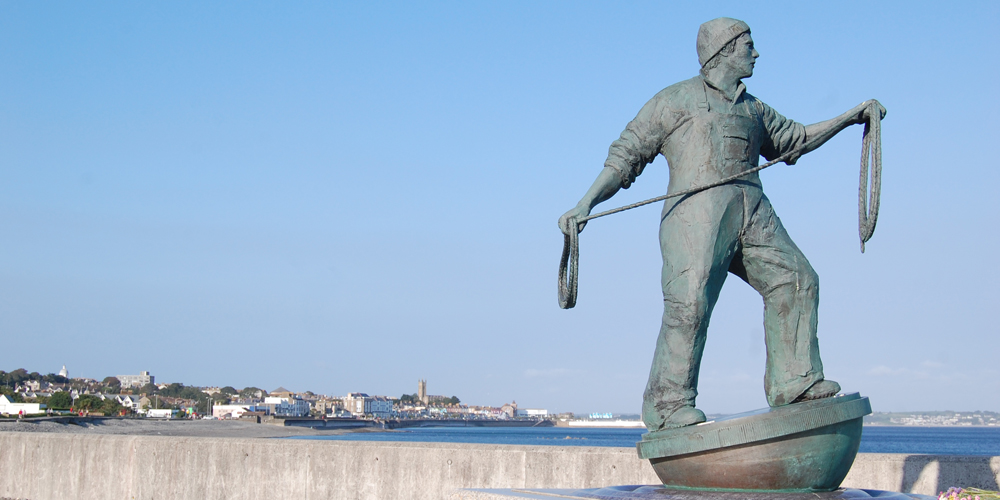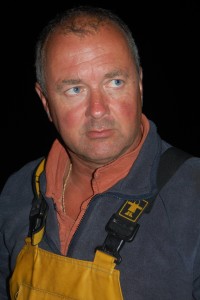Heart of Cornwall
Nestling between busy Penzance and picture perfect Mousehole, with a prime position on sweeping, sandy Mount’s Bay, Newlyn is Cornwall’s biggest port and one of the most important in England.

There’s been fishing in Newlyn since the year dot – since before the first chapel was built on nearby St Michael’s Mount. Indeed, fishing has always been closely entwined with local identity in this bastion of Cornishness, which along with Mousehole, named after the tiny size of its harbour, was one of the last strongholds of the Cornish language.
As elsewhere, Newlyn has seen its share of decline, yet fishing remains the lifeblood of this community; there are more than 600 vessels registered here and more than £20m-worth of fish and shellfish were landed in 2012. And the last few years have seen a real blossoming of investment and entrepreneurial spirit.
Take Stefan Glinski, the ring-netting specialist who helped reinvent the almost forgotten local pilchard catch as Cornish sardines: he’s done so well he’s bought a bigger boat that can land 20 tonnes in a night.
Or Mark and Emma Rowse, the new owners of Newlyn’s biggest ever crabber, which they are so proud of that they put it through its paces for all to see at the booming fish festival in August. “I’ve worked in the industry for 20 years and it’s better now than it has been for a long time,” says Emma Rowse. “There’s more investment now in things like this: good, safe, new boats.”
Or Dreckly Fish, a trio of local small boat fishermen who have caused a stir by bypassing the traditional middlemen and selling their catch direct via Twitter and Facebook.
Talk to Steve Ryman, organiser of the fish festival for the last few years, and he’ll tell you about a local community with a spring in its step that’s continuing the tradition set by the Newlyn School in the 19th century, with plenty of artists drawn here by the light, the sea and low-cost housing, not to mention plenty of boats and fishermen to paint and photograph. There’s a handful of galleries here and talk of a new independent cinema too – a small thing that can make a big difference to a regenerating town.
Or chat with the energetic Ben Tunnicliffe, who earned a Michelin star for his cooking at the Abbey in Penzance and has just opened a new pub a stone’s throw from the harbour, helping to put this prime seafood spot on Cornwall’s booming gastronomic map. He has a vision of string of eateries stretched out along the bay.
Which is as it should be. The quality and diversity of seafood down here is as good as it gets. With its ideal position jutting out into the plankton-rich Gulf Stream, on the crossroads of various migratory paths, Newlyn has access to a mixed fishery of more than 50 species. On any given day you might see 20 varieties or more sold in the harbourside fish market, packed into red boxes around which buyers gather in a huddle, bidding in whispers and gestures – a surprisingly low key affair.
The annual catch is dominated in value by monkfish, sole, pollack, hake, haddock, turbot, cod, brill and sea bass, more or less in that order, but you can probably find any fish you can think of here. There’s plenty of shellfish too – lobster, crab, scallops and more – typically sold direct to local processors.
In recent years, Cornwall generally has worked hard to build a reputation for both quality and responsible sourcing. Local boats were among the first to join Seafish’s Responsible Fishing Scheme, designed to raise and audit standards in fishing practices.
Local sourcing rules are tougher too: for example, sea bass generally need to be 36cm long to be sold in the UK, but 38cm in Cornwall – a small difference, but one that allows for another breeding season. There are tougher regulations for lobster and scallops as well.
And it was responsibly minded local fishermen who successfully lobbied UK and EU politicians to create the Trevose Box off the north Cornish coast: a 3,600-square-mile no-fishing zone on one of Europe’s most important spawning grounds for cod, plaice and sole. Cornwall also pioneered local fish tagging schemes that provide ‘hook to plate’ traceability, so buyers can look up a number online and see exactly who caught it and how. All of which has worked a treat. Such efforts, combined with the evangelism of expansive local heroes such as Rick Stein and more recently Nathan Outlaw, have given Cornish seafood a valuable cachet that sets it in good stead for the future.






